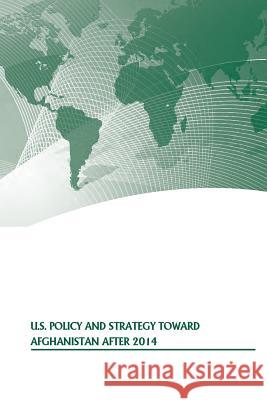U.S. Policy and Strategy Toward Afghanistan After 2014 » książka
U.S. Policy and Strategy Toward Afghanistan After 2014
ISBN-13: 9781505584646 / Angielski / Miękka / 2014 / 58 str.
After nearly 13 years, over 2,200 lives lost, and over U.S.$650 billion spent since the United States began its air campaign against Afghanistan's Taliban in October 2001, the end of the long American military campaign in Afghanistan appears to be in sight. Despite the cost and challenges, the reality that Afghanistan still ranks consistently in the bottom 10 countries for human development and corruption, and the uneven but clear progress that the country has made in many areas, the United States will soon scale down its involvement in Afghanistan, and quite possibly pull all uniformed military forces out of Afghanistan quite rapidly. Additionally, the widely reported corruption that exists throughout the Afghan government, the resilient Taliban-led insurgency, and a litany of Western blunders, mishaps, and tragedies have all helped to undermine Western interest in the Afghan War. Recent surveys suggest that public support for the war is dwindling in Western and North Atlantic Treaty Organization (NATO) member countries, with 75 percent of European respondents and 68 percent of U.S. respondents supporting either withdrawal or immediate troop reductions according to the German Marshall Fund Annual Transatlantic Trends Survey. Alternatively, perhaps the declining interest in Afghanistan is connected to a widespread popular and policymaker belief, especially since the 2011 Abbottabad raid (Operation NEPTUNE SPEAR) that killed Osama bin Laden, that U.S. and NATO war aims in Afghanistan have been achieved, or at least achieved to a sufficient degree given the current fiscal and political climate. This monograph answers six key questions about U.S. policy and strategy for Afghanistan: 1. Did the United States have or develop critical national interests in Afghanistan and its immediate neighborhood on or because of the events of September 11, 2001? 2. Was overall U.S. strategy to pursue those interests successful and appropriate? 3. What outside conditions shaping U.S. involvement in Afghanistan exist now? 4. Do new vital and/or important national interests not met by our earlier strategies exist in this region? 5. What strategy(s) should the United States adopt or emphasize to achieve any vital and/or important national interests in/around Afghanistan? 6. What risks and challenges are associated with new policies and/or strategies?
Zawartość książki może nie spełniać oczekiwań – reklamacje nie obejmują treści, która mogła nie być redakcyjnie ani merytorycznie opracowana.











